Honor has long challenged the idea of what affordable smartphones should be. The Huawei subsidiary began this transformation way back on the Honor 5X. We're a few phones in now, and you can tell Honor has gotten pretty comfortable producing good smartphones at this level.
The phones look and feel better than ever, and the Huawei of new has taken care to get its software and hardware quality under control.
We're on the Honor 8X now, and this is the phone that shows just how far Huawei's alternative brand has come. But we're not here to award points on the company's epic rise in smartphone dominance — we're here to see if the Honor 8X is worth the $250 it's sold at. Let's find out.
Pros:
- Premium two-tone glass finish
- FullView display is blissful
- Massive battery goes all day long
- Kirin 710 chipset with 6GB of RAM runs EMUI 8.2 quite smoothly
- AI-powered dual cameras simplify photography
Cons:
- EMUI, while smooth, comes with too many apps
- Outdated charging and power options
- No water resistance
About this review
I've been using the Honor 8X for 8 days. This is model JSN-AL00, the 128GB + 6GB model of the smartphone sold exclusively in China. It comes with EMUI 8.2.0.155, which was the latest update as of this writing. It shows an Android security patch date of December 1, 2018.
Honor 8X Design and Hardware
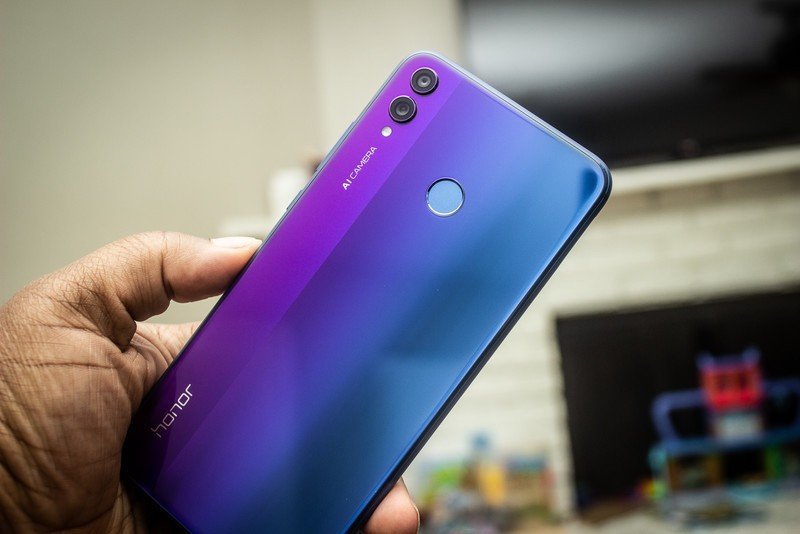
When I think of what a $250 phone should look and feel like, I don't picture a phone like the Honor 8X. Its predecessor seemed more appropriate given that all-metal builds are typical for phones of this ilk.
And yet, Honor has managed to machine a beautiful smartphone that commands attention. The front side looks nice and modern with its 6.5-inch FullView display complete with the notch we all love to hate, but turn it over to reveal one of the best designs we've ever seen.
Whereas the Honor 7X was made out of a full aluminum block, the Honor 8X bookends a metal frame with two strong pieces of glass. The rear features a striking two-tone finish under that glass, one that sports a not-always-subtle gradient that stops at a sharp change in shades where the camera bits sit.
It sort of jumps right at your eyeballs the first time you see it, and then it's hard to take your eyes off the thing. It has the elegance of something far beyond its grade. The glass doesn't exactly melt into the frame like we see on higher-end devices with 2.5D glass, but it's slick all the same.
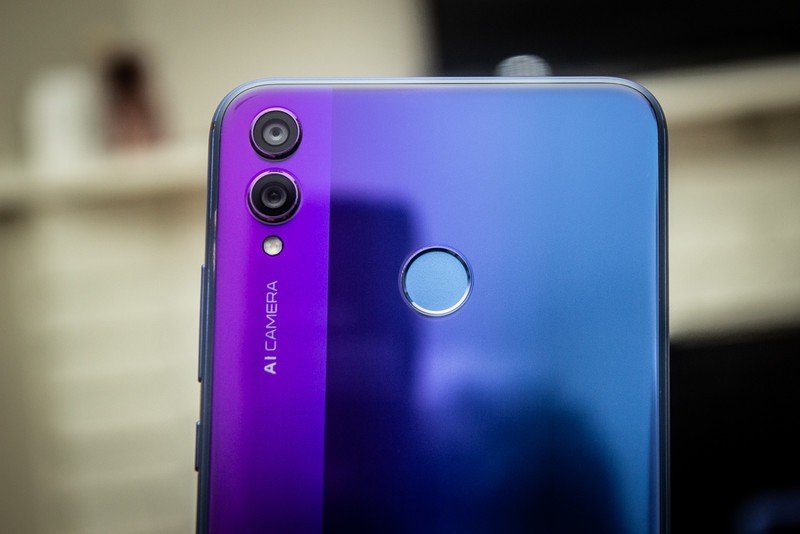
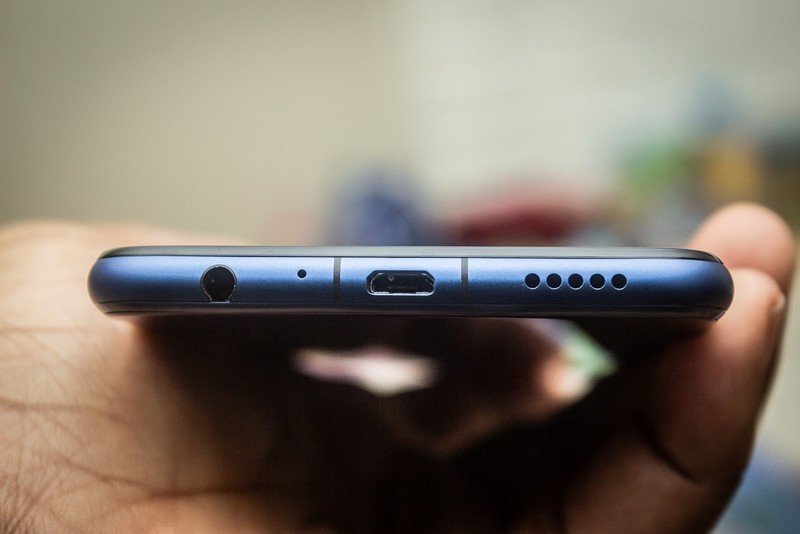
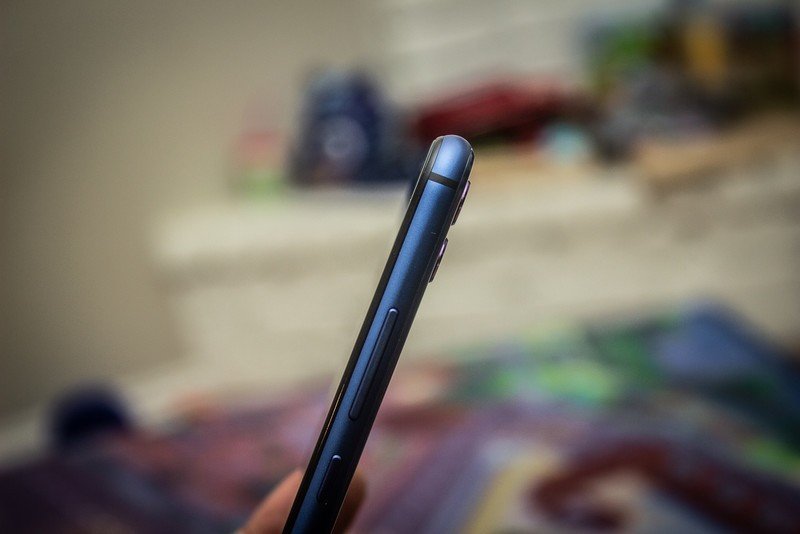
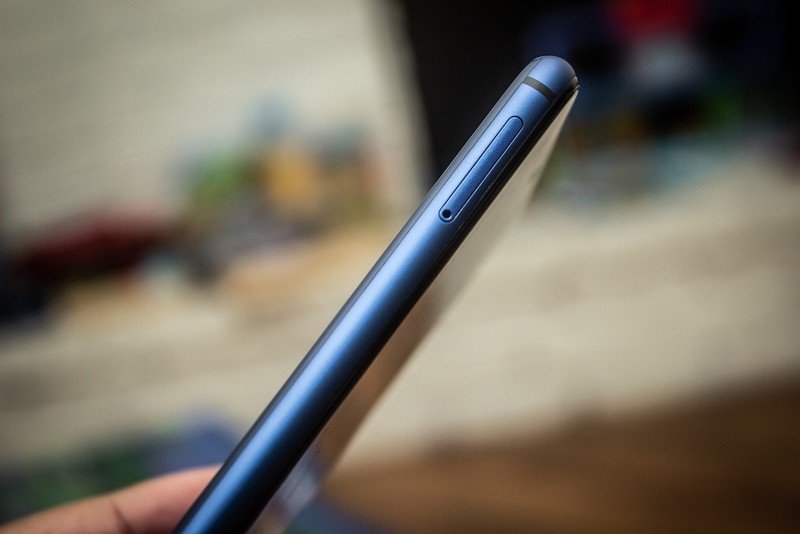
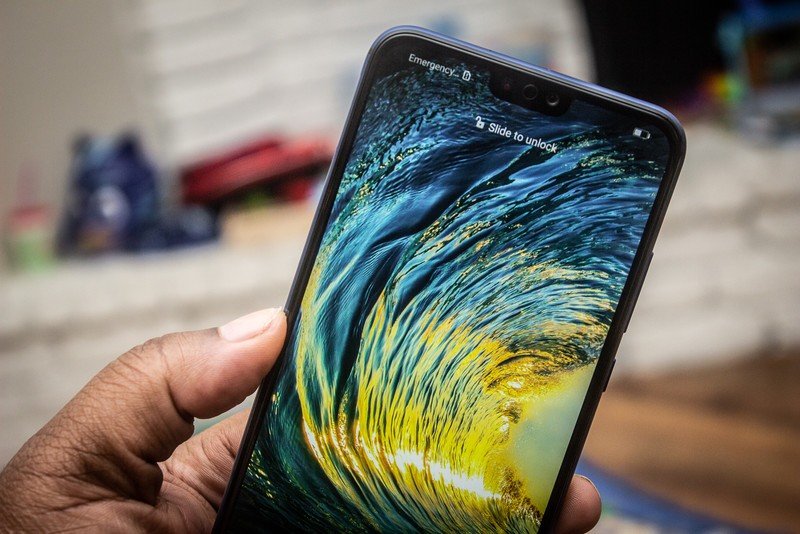
There's no real functional reason for the glass as the Honor 8X sadly doesn't include wireless charging (and we're not counting attenuation concerns), so this was a pure design play. I have no complaints about that other than it makes the phone a little bit slippery on smooth surfaces, so a case (a slim clear case is included in every box) or extra care is needed when handling it.
Staying on the rear of the device, you'll notice those two aforementioned cameras. One is a 20-megapixel sensor that does all the heavy lifting, while a secondary 2-megapixel depth sensor is used for advanced imaging needs like simulated bokeh, neither of which add much girth to an already-thin body. It's flanked by a lone LED flash. The middle features a delightfully speedy fingerprint sensor sitting flush inside the slab of glass, and an NFC radio under the hood opens the way for mobile payments and easier pairing with other devices that use it.
A phone this cheap shouldn't look this good.
Volume and power buttons are kicked off to the right edge, while the left houses a dual SIM tray that features a third slot solely for adding a microSD card. On the bottom are the bottom-firing speaker, a 3.5mm headphone jack, the main microphone (the noise canceling microphone sits at the top edge), and — unfortunately — a Micro-USB port for charging and data.
I'm happy to see that users of analog audio equipment haven't been forsaken, but I'm highly disappointed Honor opted not to include a USB-C port here when the industry has long been settled on the new standard. This results in annoyances from both convenience and performance standpoints, with charging speeds and transfer times suffering heavily compared to most modern smartphones. As for that speaker, it's loud enough for a personal music listening or video watching session but look to your headphones and Bluetooth speakers if you're in need of higher quality.
| Specs | Honor 8X |
|---|---|
| Screen | 6.5-inch Full HD+ (2340x1080) IPS LCD |
| Chipset | HiSilicon Kirin 710 |
| RAM | 4GB/6GB |
| Storage | 64GB/128GB |
| Software | Android 8.1 Oreo, EMUI 8.2 |
| Rear Camera 1 | 20MP, ƒ/1.8 |
| Rear Camera 2 | 2MP |
| Front Camera | 16MP, ƒ/2.0 |
| Security | Rear fingerprint, face unlock |
| Battery | 3750mAh |
| Connectivity | Wi-Fi ac, BT4.2, NFC, microUSB, FM Radio |
| Colors | Black, Red, Blue |
| Dimensions | 160.4 x 76.6 x 7.8mm |
| Weight | 175g |
| Price | $250 |
Back to the front, we see that controversial notch design that was popularized by Apple. It's noticeable, but not overbearing. On that notch sits a 16-megapixel camera for selfies, as well as an LED light, a speaker dot, and the sensors for reading ambient light and proximity. I'm not bothered by notches so long as the software can properly work around them, and the Honor 8X posed no problems in that regard. If you don't like it, there's an option to "disable" it (just know that the non-perfect black produced by LCD screens makes it more obvious that it's a software trick).
The whole point of the notch, though, is to make way for the 1080p FullView display, boasting a 91% screen-to-body balance in a 19.5:9 aspect ratio. This design offers the most screen real estate possible without affecting ergonomics. I found the phone easy to hold and use without the need for the included one-handed mode, but I also have big hands.
The display itself is nothing special. It's a sharp 6.5-inch LCD panel that has nice even lighting and good vibrancy in most usage scenarios. The ability to customize color temperature, screen resolution, and color modes is much appreciated.
Viewing angles suffer slightly when looking at the Honor 8X off-center, such as those times when I just want to check my notifications without having to pick the phone up off my desk. The display is also practically unusable at its lowest brightness setting, a real bummer for people like me who prefer to turn it way down at night. And even if all you're after is a nice balance, it doesn't seem to have much middle ground in terms of its luminosity scale, something to consider if you have a sensitivity to brightness.
I didn't find myself starving for battery life all that much. Inside is a 3,750mAh pack, which I've found was enough to go close to two days with moderate usage. A more stressful test for the battery — the time I spent combing through EMUI to see everything it had to offer, brightness set at medium — saw it expiring at the 18-hour mark, more than enough time for a long work day.
Charging speed over USB was not at all good, so I often had to juice up tethering the Honor 8X to a wall using the really short Micro-USB cable it comes with. The speeds were more acceptable with that method, but still not nearly as good as the latest fast charging standards.
Performance
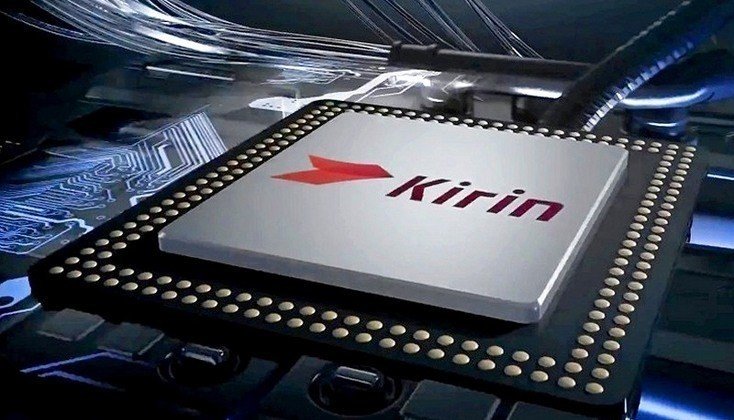
Battery life is good enough not to consider the Honor 8X's charging pitfalls backbreaking. Much of that impressive battery life has to do with the super-efficient Kirin 710 under the hood, which utilizes an octa-core chipset and a Mali-G51 MP4 GPU on a 12nm die.
The Kirin 710 uses four ARM Cortex-A73 cores clocked at 2.2GHz for heavy duty processing work, while another four 1.7GHz Cortex-A53 cores keep things running smoothly without sucking on battery life when Android doesn't need all that power. Pair it with 4GB or 6GB of RAM depending on which exact model you get, and the result is pretty impressive.
We owe some of that praise to the massive improvement that is EMUI 8. The Honor 8X is on version 8.2 now, to be exact, and in a good way, it shows.
Qualcomm has some serious competition for its mid-range chipsets.
The Kirin 710 seems perfectly tuned for everything the OS needs it to do, with a satisfying degree of smoothness apparent all throughout the system. I spent a lot of time moving between different types of apps to give the phone all it could handle, and it didn't once break a sweat.
Gaming performance was also a bit of a surprise. The Mali-G51 MP4 is no slouch, as while it can't quite handle the most demanding games at high settings, it does offer something smooth enough to be playable.
And if you're someone like me who doesn't mind sacrificing a bit of graphical fidelity for a more stable game, you'll find that it can handle anything out there. You can thank the new GPU Turbo feature for that, which will temporarily overclock the GPU when it demands more juice.
System performance is the primary metric by which I judge smartphones and the Kirin 710 soars. I found myself hesitating to recommend a phone using a chipset from the Kirin 600-series, but we can finally put those days behind us.
Honor 8X Software
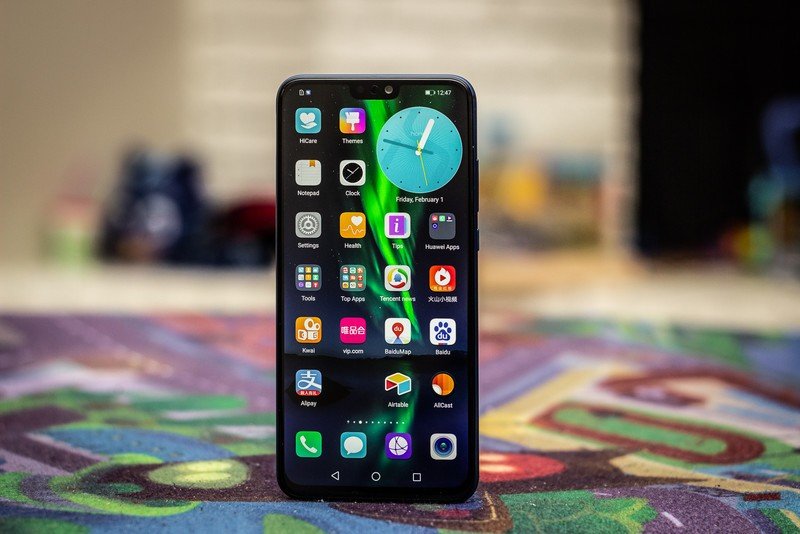
Huawei is one of those companies you can feel improving in all the right areas at all the right times. Just as its phones began improving, so did its software.
EMUI wasn't always good. In fact, it's long ranked among the most undesirable Android skins available. That all changed with the launch of EMUI 8 sitting on top of Android 8.0 Oreo.
Huawei sought a cleaner, lighter user interface that clearly has a strong emphasis on cohesiveness. There's less disjointedness overall, and it feels almost overly optimized for the Kirin 710 running the show. It doesn't attempt to get in Android's way like older versions did.
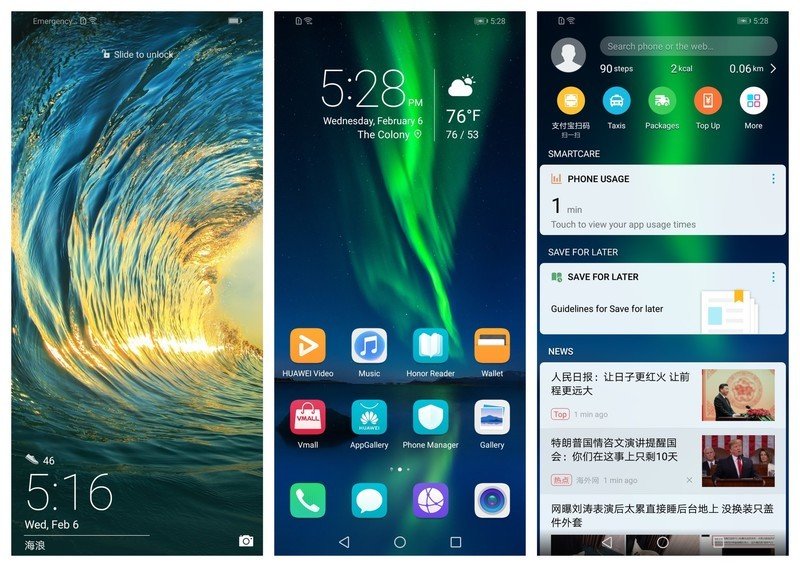
There's an abundance of options that let you make the phone your own. It has a robust selection of themes for those who like changing their look up, and dozens of system settings put you in control of everything the Honor 8X does. It also adds a new option for biometric security in its face lock feature, which I found performs quite fast. It's not the best option for lockdown security, but it's hard to beat the convenience.
Even on version 8.2 now, EMUI does still feel bloated in some places. For one, the amount of pre-installed apps the Honor 8X comes with is downright ridiculous. It might even make Samsung's busy user experience feel tolerable (especially after the One UI update). It's no problem to tuck away the things I don't need, but it's no less annoying.
I've also never been a big fan of EMUI's launcher, which doesn't hide apps into a secondary window by default. Everything is just kind of blurted out onto the grids of your home screens, though there's an option to change this in your launcher settings.
And while I'm a fan of the daily briefing panel that's become a staple on launchers these days, EMUI's take on it leaves a bit to be desired (although I did like that it included a quick glance at your activity stats for the day). Of course, these grievances are easily solved by downloading a third party launcher, so don't let them detract from an otherwise sublime user experience.
Honor 8X Camera
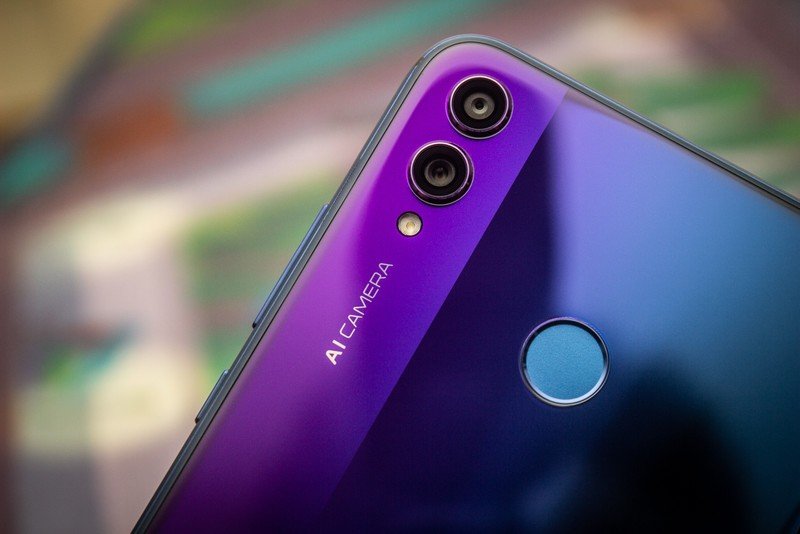
With more and more device makers emphasizing higher quality cameras for cheaper phones, Honor thought it wise to go all in. Dual sensors on the rear of the Honor 8X work in concert to enable smarter photography.
Your main sensor is a 20-megapixel unit with a max aperture of f/1.8. It's joined by a 2-megapixel depth-sensing camera that helps the software separate the foreground from the background. This is what makes it possible to add a simulated bokeh effect to your photos. I found the Honor 8X performed quite well at this task.
The selfie camera wasn't so great. The implementation of its simulated depth-of-field effects is disappointing. It's easy to spot imperfections in the resulting images and it doesn't give me that organic feeling other phones do. For the best results, try a high-contrast scene where your skin or hair color isn't close in shade to the color of your background.















Otherwise, the sensors are plenty capable in ideal lighting conditions. Photos come out with good color and exposure, though you begin to lose a lot of detail as lighting sources fade. That loss of quality is especially noticeable when photographing any type of foliage.
It can be pretty bad in some low light scenarios, but Honor includes a handheld Night Mode that simulates a long exposure over a period of up to 15 seconds. It takes a series of images at escalating exposures that were snapped over that time and combines them to create a more usable low light photo. It's not perfect, but it's better than trying to pull the same trick off manually. Although the feature allows you to hold the phone in your hand, you'll still need to keep the phone as still as possible for the best results.


As you can see in the shots above, I lose a ton of detail trying to shoot this low light scene with standard controls (left), but Night Mode is able to bring those details back quite nicely (right). I don't know why the camera struggles to handle low light photography without Night Mode's magic tricks. It's a shame you can't rely on Night Mode for every shooting scenario, as subjects have to be stationary for quite some time in order for it to produce a good result.
Honor made a pretty big deal about bringing AI photography to the Honor 8X, so naturally, there are high expectations of its capabilities. Right away, I wanted to see what kind of effect AI had on the final output of my images.
I found that the Honor 8X isn't quite as aggressive with image corrections as the marketing materials let on. That might be a negative to some, but I consider it a win. It's common for some overzealous post-processing software to overdo it, and I never felt like I lost control of the shots I envisioned. The camera did add a slight vignette to some candy canes I shot as it thought I was shooting flowers. I didn't mind the enhancement at all.

Huawei's algorithm is mostly looking to add a bit more saturation in underrepresented colors and fix the exposure where it can, but will otherwise get out of your way. I don't know that I like being forced down to 12MP shots when using AI. It's not that the number bothers me, I just prefer to have as much detail preserved as the sensor allows.
It's in the composition phase where Honor's AI really shows its worth. It analyzes the scene to determine what's going on and sets an appropriate shooting mode and settings for the job. Honor claims it can detect nearly 500 scenes across 22 categories.
In my testing, the phone did show some proof of competence as it accurately identified scenarios for indoor and outdoor shooting, photographing text, and snapping a shot of some food. It's all for the sake of matching your scene with appropriate settings to ensure you get the best shot. Ideally, it could identify sports scenery and kick up the shutter speed to freeze the action. I couldn't possibly test every scenario, so you'll just have to trust that the Honor 8X is as smart as advertised.
AI enables a few other cool things, such as a smile to shutter feature, improved post-processing effects, and object recognition. In the gallery, it makes finding all your shots easier by automatically sorting your photos by location, time and date, and more.
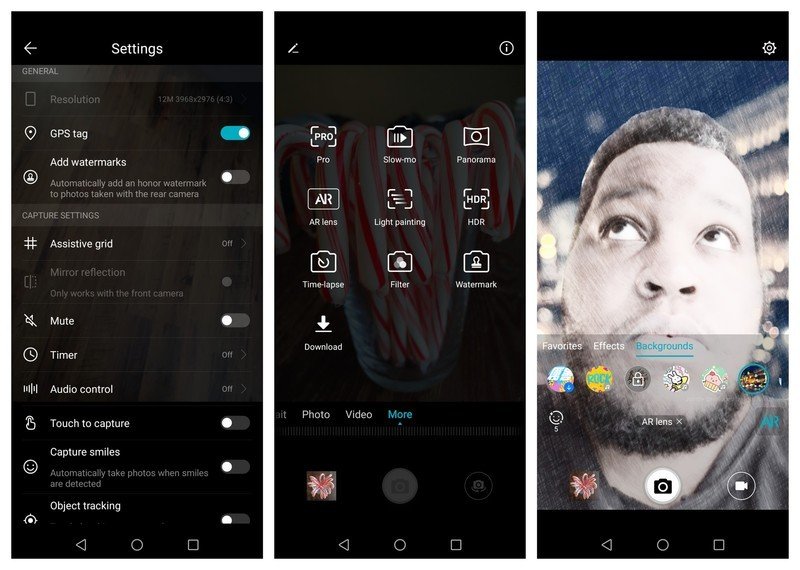
Plus, there are tons of other shooting modes to fit your needs. Panoramas, stickers and AR, slow-motion video, time lapses, product and barcode scanning, live translations, and the all-important Pro mode where you can tweak all the settings yourself — the Honor 8X can handle all the shots you need.
Video recording capabilities top out at 1080p at 60 frames per second. Its default compression algorithm doesn't introduce any weird artifacts in the resulting files, and the microphone has no problem picking up clear audio. It'll do for your quick Snapchat updates and some fooling around, and maybe even a little more if you wanted. Video recording on the selfie camera is limited to 720p, which is enough for video calls but you may want something more capable for vlogging or other purposes.
Honor 8X Bottom line
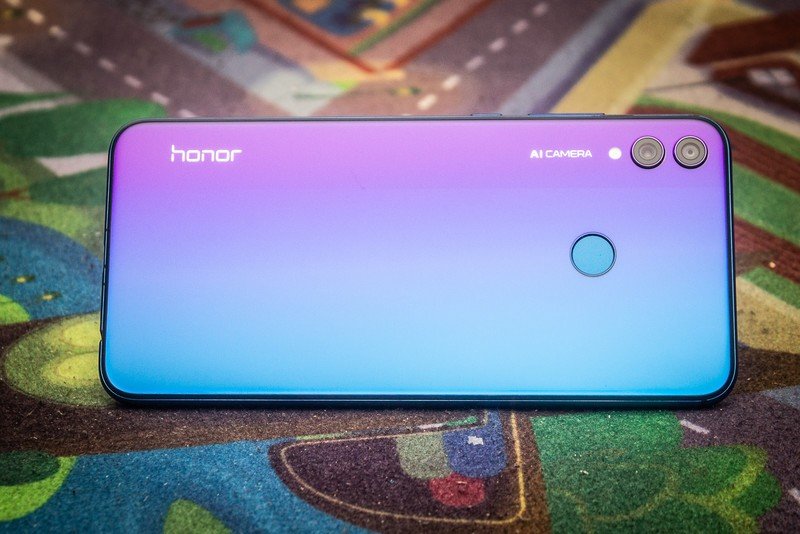
Honor pulls off a pretty impressive balancing act with the Honor 8X. For $250, the smartphone can do anything an average user needs, and where it doesn't outright excel, it at least doesn't take away from the overall device.
The Honor 8X invites you in with its unique design. It feels like something fresh and new, which is something I could never say for the iPhone clones of yesteryear. The rear of the device has more to do with that than anything.
More importantly, beefier internals help support a complex marriage of quality hardware and firmware that seems perfectly built to take full advantage of it. I walked away not wanting for much save for a USB-C port, fast charging, and maybe some level of water resistance. Lack of wireless charging will also disappoint some. It's easy to forgive these downsides when considering the price, and especially when considering the other areas the Honor 8X shines.
The HiSilicon Kirin 710 completely outclasses the Kirin 600-series and gives any Qualcomm mid-range chipset a run for its money. The camera offers a robust suite of features and new AI-powered capabilities, so even though overall image quality could be better, things could have been far worse. The display isn't perfect, but if you're not Samsung or Apple, whose is? And while I could do without some of the bulk EMUI ships with, it at least does its thing without me having to fight lag and stutter.
4 out of 5
You'd be hard-pressed to find a smartphone as balanced as the Honor 8X without venturing beyond that $300 mark, and for that, it sits near the top of our list for cheap smartphones that deserve your consideration.
If you're looking to buy one, do note that the Honor 8X is not yet officially available in the U.S. You can buy the international model on Amazon with the caveat that it doesn't come with a warranty, and that it doesn't support all of the common LTE networks you'll find in the country. Honor previously announced that the device will officially land in America, but we have yet to hear any concrete timeline.


